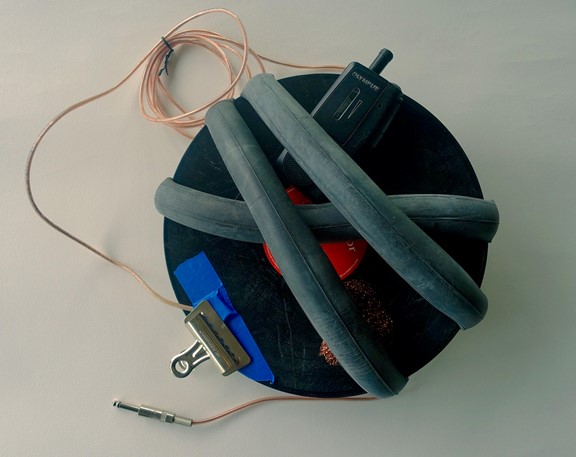 |
| Handmade sonic instrument used in Lance Austin Olsen’s sound environment. |
Lost Foundry/Fukushima Rising: a collaborative site-specific installation curated by Sue Donaldson, featuring paintings/soundtracks by Lance Austin Olsen and a sculptural diorama by Jeremy Borsos, from February 4-March 6, in Victoria, British Columbia.
“What art is, in reality, is this missing link, not the actual links which exist. It's not what you see that is art; art is the gap between the things you see.” – Marcel Duchamp
The obscure psychic explorer Edgar Cayce (1877-1945) once confidently asserted, “The medicine of the future will be music and sound,” a seemingly cryptic remark that comes more clearly into focus when one contemplates the power of sonics to alter everything from our perception of time and space to the condition of our own bodies. Especially subsequent to 1945, when the compositions of John Cage and Conlon Nancarrow called into question the entire landscape of silence we had previously overlooked, and then later on in the twentieth century, when ambient music created a whole other dimension to listening in a statue of suspended animation approaching rapture, Cayce may finally be coming into his own.
